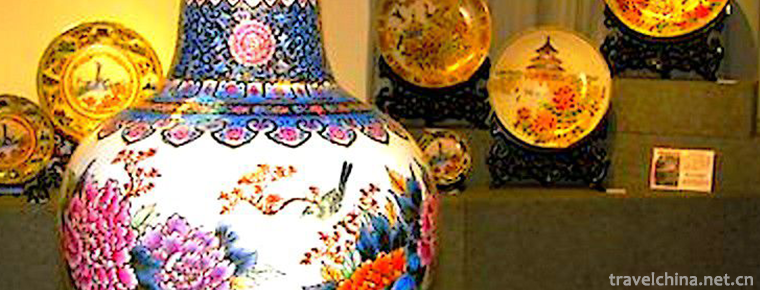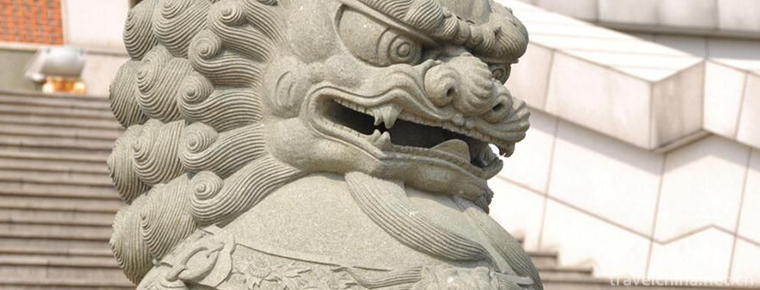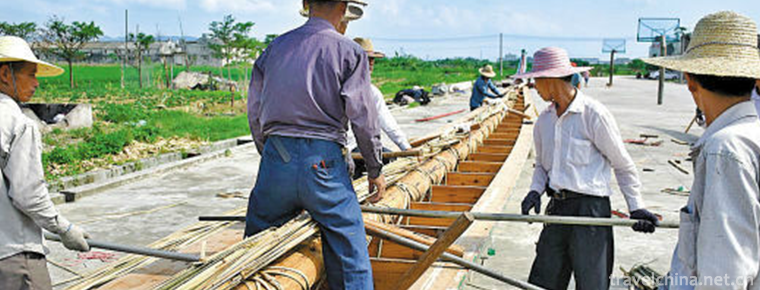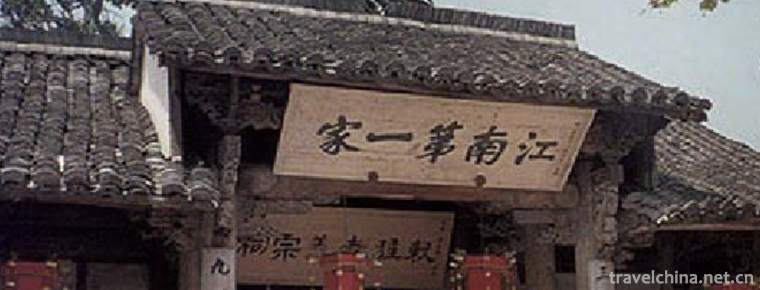Huangshan University
Huangshan University
Huangshan University is located in Anhui province. Huangshan City It is a comprehensive provincial general. Undergraduate Colleges .
Huangshan University, formerly known as the Huizhou normal school, was founded in 1978. In December 1997, it merged with the Huizhou Junior College of University of Science and Technology of China. It was renamed Mount Huangshan higher vocational college. In August 2000, the Anhui Provincial People's Government approved the establishment of the Mount Huangshan Forestry School into the Mount Huangshan higher vocational school. In February 2002, it was approved by the Ministry of education and upgraded to Huangshan University. In 2014, Huangshan University was approved for construction. Anhui higher education revitalization program Local applied high level university projects and countries Excellent agricultural and forestry talents education and training plan Project.
As of September 2018, the school covers an area of 1800 mu, of which the school building area is 527 thousand and 200 square meters, and the total value of teaching equipment is 274 million yuan, with 999 students in the school, 18556 full-time students, 16 two schools and 55 undergraduate majors.
Historical evolution
In 1965, Anhui Tunxi normal school was founded, mainly responsible for training primary school teachers. Kindergarten The tasks of teachers and rotational education administrative cadres.
In 1970, the school was renamed Huizhou normal school.
In March 1978, Anhui Provincial People's Government Approved by the Huizhou normal school.
On the basis of this, the Huizhou normal university class of Anhui Labor University was founded. It formally undertook the enrollment task of higher education institutions, and the educational system was two years.
September 1979, renamed Anhwei Normal University Huizhou junior college.
In May 1980, The State Council Approved to Huizhou normal college, the Provincial Normal University, the school system for three years, the size of students in the provisional 1200, to cultivate junior high school teachers as the main task.
In December 1997, it was founded in October 1986. University of Science & Technology China Huizhou junior college merged with Huizhou normal school. Mount Huangshan College .
In September 2000, Mount Huangshan forestry school, founded in October 1958, was incorporated into Mount Huangshan higher vocational college.
In February 2002, the name of the Mount Huangshan college was changed to Huangshan University.
academic research
scientific research institution
As of October 2018, there were 1 provincial-level research centers, 1 municipal research centers and 8 school level research institutes.
Provincial research centres (1): Anhui Research Center for simulation design and modern manufacturing engineering technology
Municipal Research Center (1): Huangshan City local tourism research center
School Research Institute (8): Institute of photoelectric technology, Institute of biodiversity, Institute of biological resources, Applied Chemistry Institute, Institute of Hui culture, World Heritage Institute, Institute of economic management and Huizhou dialect Institute.
Achievements in scientific research
During 12th Five-Year (2011 to 2015), Huangshan University set up one or two items, 11 items, 117 items in three categories, 165 items in four categories, 141 items in horizontal projects, 10 million yuan in terms of funds, two or three items in provincial science and technology, 1 1 items in the provincial Science and Social Sciences Award and two prize, and other articles in the paper, including articles in the category of patents, and patents in patents.
Academic resources
· Collection resources
As of October 31, 2018, the total amount of literature resources in Huangshan University library amounted to 3 million 911 thousand and 559.
There are 1 million 504 thousand and 8 books, 2 million 407 thousand and 551 e-books, 961 kinds of Chinese periodicals and 69 kinds of newspapers. Featured collection of more than 80000 Huizhou documents, Huizhou local chronicles, genealogy, local ancient books and more than 6000 species, more than 1.4 volumes, ordering, sharing, and self built Chinese and foreign language databases 54, of which 1 are self built special databases, and 1.4 free trial databases.
· Academic journals
" Journal of Huangshan University The main columns in Humanities and social sciences include: "Huizhou cultural studies", "Tourism Studies", "World Heritage Studies", "philosophy and history", "politics and law", "economy and management", "literature, language", "education and teaching" and so on. The main columns of natural science include: "Mathematics", "Information Engineering", "Chemistry", "resources and environment", "computer and network", "architecture", "Sports", "education, teaching" and so on. The journal was awarded the outstanding Journal of Anhui higher education institution and the outstanding national social science journal.
Cultural tradition
School badge
The school emblem is changed from three letters of H, S and U. The H word is composed of two forms with the characteristics of Mount Huangshan Fenglin geology. The tall and straight form symbolizes the spirit of vigorous development of the school, and also represents the educational thought of "ten years of trees and hundred years of people". The whole "H" form is a chime, which implies the spirit of school spirit and the awareness of running a school with one heart and one mind. The S letter runs through the form of H, which symbolizes the spirit of learning "the road is diligent". U changes the 1.5 encircling form, wrapping H and S, symbolizing the school running concept of "inclusive and inclusive".
School motto
The motto of Huangshan University is "teaching people to seek truth and learning to be a real person". This motto is quoted by Tao Xingzhi, an educationalist in 1946, as saying in the article "primary school teachers and democracy movement": "teaching thousands of religions, teaching people to seek truth; learning thousands of studies, learning to be real." Among them, "teaching people to seek truth" means teaching people to pursue truth, understand natural laws, understand social norms, understand themselves, and have a scientific spirit. Learning to be a real person is to learn to be a happy and happy person who follows the laws of nature, social norms and loyalty to himself.
http://www.hsu.edu.cn/










-
Xue Xiang Snow Township
Snow Township, the full name of "China Snow Township National Forest Park", is located in Changting Town, Hailin City, Mudanjiang City, Heilongjiang Province, China, and belongs to the Dahai.
Views: 204 Time 2019-02-27 -
Firing Techniques of Chaozhou Coloured Porcelain
In Chaozhou at the end of the Qing Dynasty, new colored pigments were used in the colored porcelain painting. Combining traditional glaze painting art with traditional Chinese painting .
Views: 234 Time 2019-04-16 -
Huian stone carving
Hui'an stone sculpture mainly served religion in its early stage, with strong religious color. It is mainly embodied in the architectural design, sculpture and installation of the temple,.
Views: 152 Time 2019-05-05 -
Kirgiz hawk taming custom
Originating in the East, the Falcon has a history of 4000 years. The custom of taming Eagles has been handed down orally without any written records. However, the Kirgiz people have kept the saying .
Views: 132 Time 2019-05-09 -
Dragon Boat Making Skills
Dragon boat craftsmanship is an ancient traditional handicraft. Zhongtang Town, Dongguan City, Guangdong Province, has a history of more than 1000 years. Zhongtang Town is a typical water town, locate.
Views: 171 Time 2019-05-15 -
Construction Techniques of Wuzhou Traditional Residential Buildings
On June 7, 2008, Wuzhou traditional residential construction techniques were approved by the State Council and listed in the second batch of national intangible cultural heritage list..
Views: 202 Time 2019-06-30 -
Xinhua Folk Song
Xinhua Folk Song is a kind of traditional folk song mainly spread in Xinhua County, Loudi City, Hunan Province. Xinhua folk song has a wide range of contents, old style, unique style, simple rhyme, ch.
Views: 157 Time 2019-07-06 -
Bowang mountain
Bo (B ó) Wang mountain, also known as Bowang mountain. Bowang mountain is one of the most important breeding and living places of the ancient Bo nationality. It was known as lunzhudadun and shitoudazhai in ancient times.
Views: 160 Time 2020-10-16 -
Huahu Lake
Huahu is located on the 213 national road between Ruoergai in Sichuan Province and Langmu temple in Gansu Province. It is a natural Haizi on the grassland of GER dam. Geer dam is the second largest grassland in China after Hulunbeir Grassland.
Views: 146 Time 2020-11-07 -
Ruoergai grassland
Ruoergai grassland is like a magnificent emerald inlaid on the border of Northwest Sichuan, known as "oasis of Northwest Sichuan Plateau", and is one of the three wetlands in China..
Views: 213 Time 2020-11-07 -
Topography and geomorphology of Luzhou
Luzhou city is a typical mountainous city with 56.14% of the total land area. It is mainly composed of high mountains (500-1000 meters above sea level) and middle mountain (1000-1902 meters above sea level). Taking the middle Yangtze River Valley as the lowest center, it gradually .
Views: 309 Time 2020-12-14 -
Historical evolution of Suining
In Xia and Shang Dynasties, Shu nationality gradually developed and distributed in Sichuan Basin. During the spring and Autumn period and the Warring States period, the Shu nationality .
Views: 192 Time 2020-12-16







